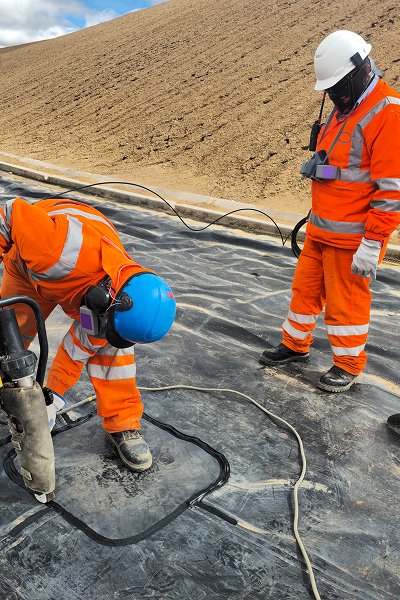
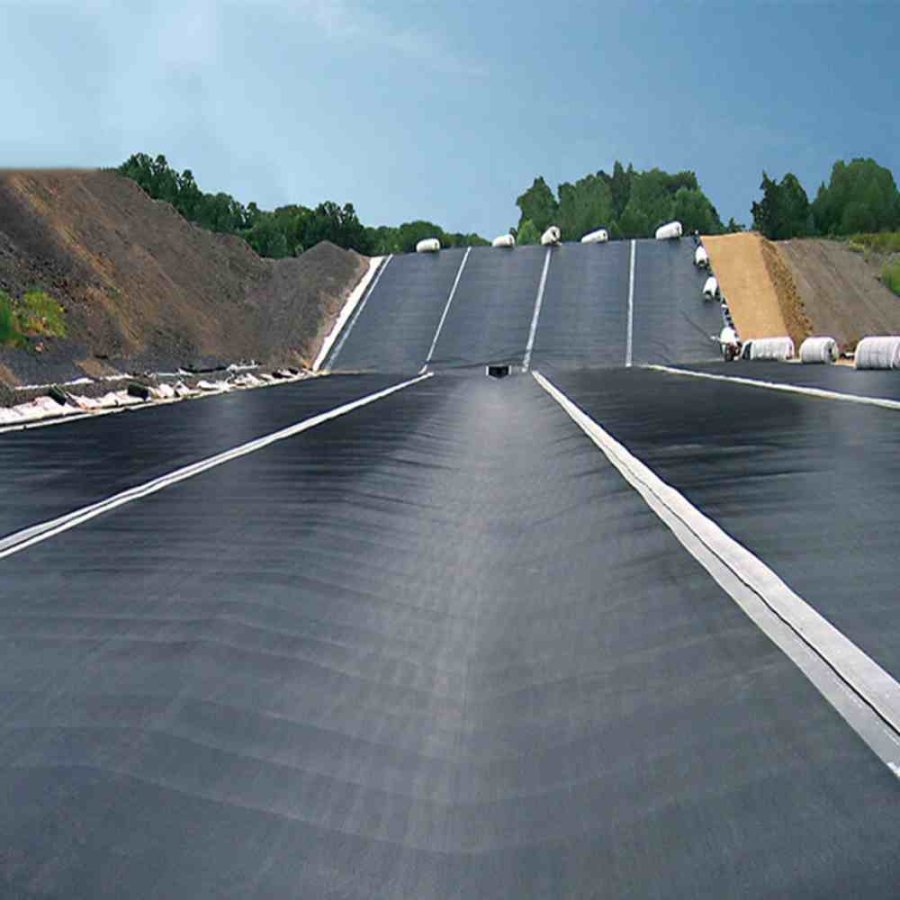
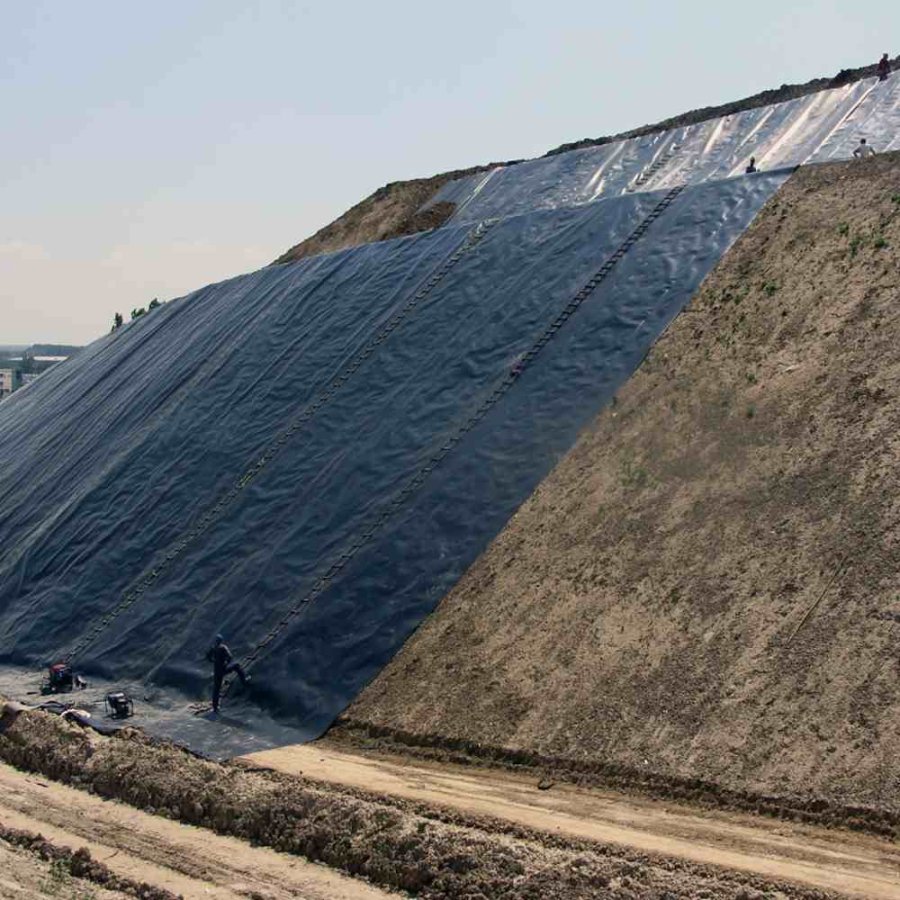
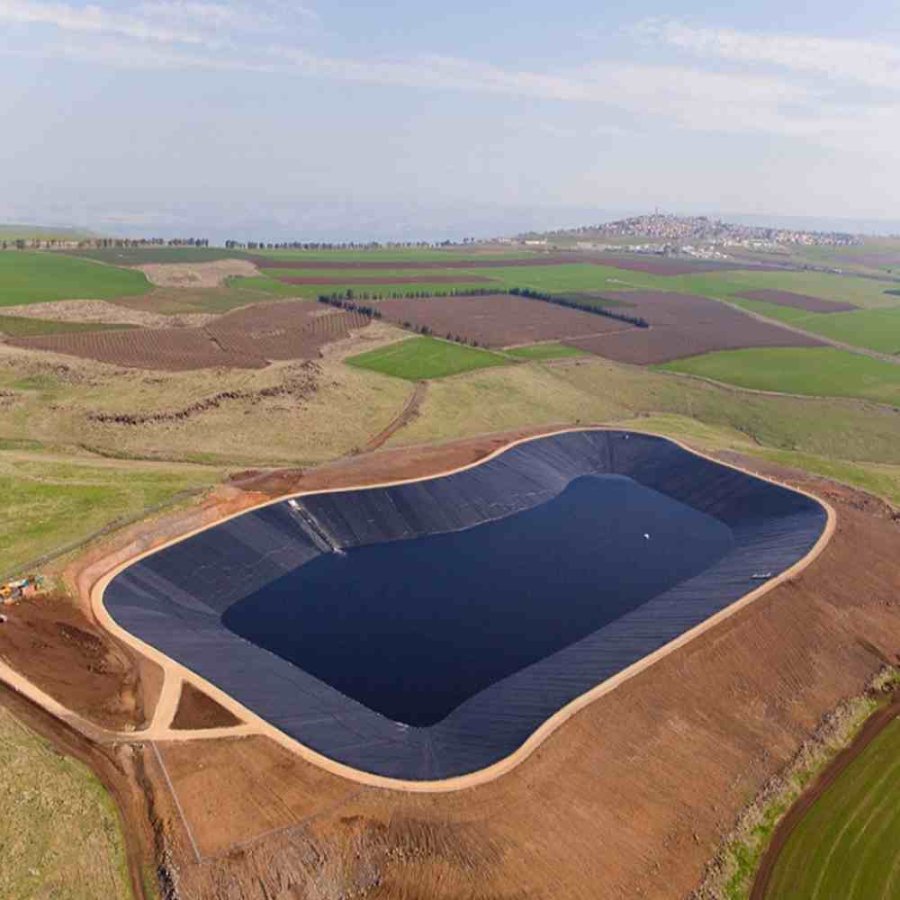
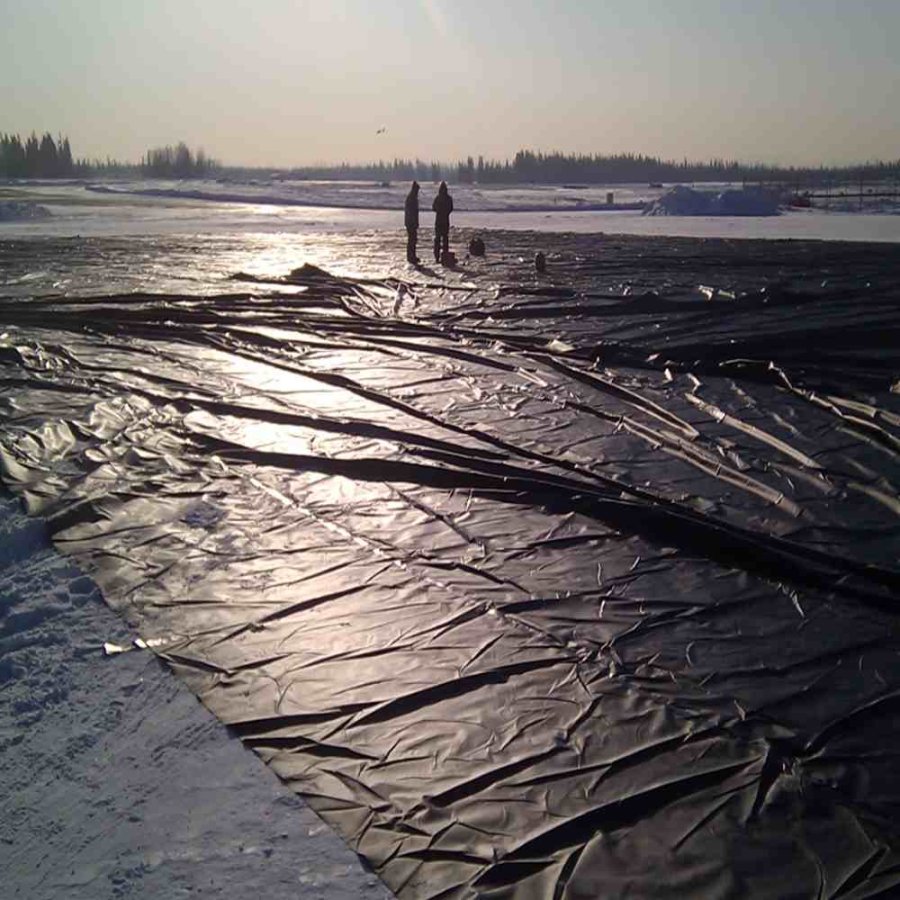
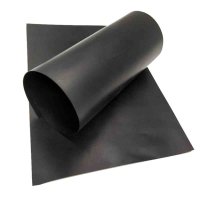
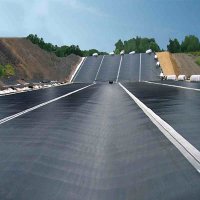
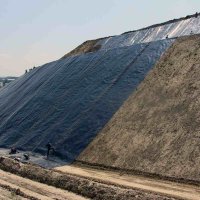
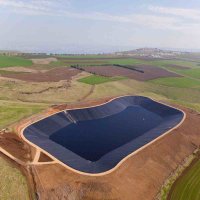
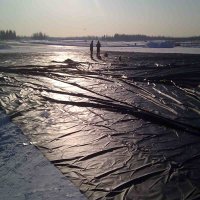
HDPE geomembrane (high-density polyethylene geomembrane) is a waterproof and anti-seepage material made by blowing or calendering process. It has excellent anti-seepage performance, chemical corrosion resistance, aging resistance and mechanical strength, and is widely used in anti-seepage projects such as landfills, reservoirs, artificial lakes, sewage treatment pools, and mine tailings ponds.
Features:
High strength: High-strength HDPE material is used, with high tensile strength and can withstand large loads.
Corrosion resistance: HDPE material has good acid and alkali resistance and chemical corrosion resistance, and is suitable for various complex geological environments.
Anti-aging: After special treatment, it has good UV resistance and oxidation resistance, and has a long service life.
Light weight: Light specific gravity, easy to transport and lay, can effectively reduce construction costs.
Convenient construction: Foldable, easy to transport and lay, high construction efficiency.
Good water permeability: Mesh structure, good water permeability, can effectively remove moisture from the soil, and prevent water accumulation from damaging the project.
Ecological and environmental protection: Recyclable and pollution-free.
Application Fields:
Civil engineering: used for roadbed reinforcement, slope protection, and retaining wall reinforcement in highways, railways, airports, and other projects.
Water conservancy projects: used for slope protection, anti-scouring, and drainage in dams, reservoirs, channels, and other projects.
Environmental engineering: used for anti-seepage, drainage, and vegetation restoration in landfills, tailings ponds, and other projects.
Construction engineering: used for waterproofing and moisture-proofing in basements, roofs, and other projects.
Other fields: used in landscaping, agricultural horticulture, and other fields.




Customized Service:
Specification customization: HDPE geocells with different heights, weld distances, sheet thicknesses, colors, etc. can be customized according to customer needs.
Connector customization: Connectors with different materials and specifications can be customized according to customer needs.
Packaging customization: Different packaging methods can be customized according to customer needs, such as roll packaging, pallet packaging, etc.
Production scenario:
Raw material preparation: Select high-quality HDPE raw materials and undergo strict quality inspection.
Sheet production: Process HDPE raw materials into sheets.
Ultrasonic welding: Use advanced ultrasonic welding equipment to weld the sheets into a three-dimensional mesh structure.
Quality inspection: Strict quality inspection of finished products to ensure that the products meet national standards and customer requirements.
Shipping scenario:
Logistics and transportation: Use professional logistics and transportation methods to ensure that products are delivered to customers safely and promptly.
On-site guidance: Provide professional on-site guidance services to assist customers in product laying and construction.




Certificates:
Product quality certification: Passed ISO9001 quality management system certification, CE certification, etc.
Product test report: Provide product test reports issued by authoritative organizations.




FAQ:
Q: How long is the service life of HDPE geocell?
A: The service life of HDPE geocell can reach more than 50 years, and the specific service life depends on the use environment and construction quality.
Q: What are the construction methods of HDPE geocell?
A: The construction methods of HDPE geocell mainly include laying, connection, fixing and other steps. For specific construction methods, please refer to relevant specifications or consult professionals.
Q: What is the price of HDPE geocell?
A: The price of HDPE geocell is affected by factors such as specifications, quantity, and transportation distance. Please consult relevant manufacturers for specific prices.
 Pond water seepage prevention 1.0mm geomembrane liner
Pond water seepage prevention 1.0mm geomembrane liner
Geomembrane liner waterproof and anti-seepage material has high anti-seepage performance, chemical corrosion resistance, aging resistance and mechanical strength. It is widely used in anti-seepage projects such as landfills, reservoirs, artificial lakes, sewage treatment pools, and mine tailings ponds.
 HDPE Geomembrane (复制)
HDPE Geomembrane (复制)
HDPE geomembrane (high-density polyethylene geomembrane) is a waterproof and anti-seepage material made by blowing or calendering process. It has excellent anti-seepage performance, chemical corrosion resistance, aging resistance and mechanical strength, and is widely used in anti-seepage projects such as landfills, reservoirs, artificial lakes, sewage treatment pools, and mine tailings ponds.
 Plastic Grass Grid
Plastic Grass Grid
Plastic grass grid is a grid-like structural material made of plastic materials such as high-density polyethylene (HDPE) or polypropylene (PP), mainly used for greening parking lots, fire passages, sidewalks, etc. It has the advantages of strong bearing capacity, water permeability, air permeability, and good greening effect, and is an ideal choice for achieving ecological protection and engineering protection.
 Steel-plastic Geogrid
Steel-plastic Geogrid
Steel-plastic geogrid is a composite geosynthetic material with high-strength steel wire (or steel belt) as reinforcement material and a polyethylene (PE) or polypropylene (PP) protective layer wrapped on the outside. It combines the high strength of steel and the corrosion resistance of plastic, and is widely used in projects such as roadbed reinforcement, slope protection, retaining walls, etc., especially suitable for reinforcement needs under high loads and complex geological conditions.
 PP Woven Geotextile
PP Woven Geotextile
PP woven geotextile is a geosynthetic material made of polypropylene (PP) through a weaving process. It is woven with flat or round wires and has the characteristics of high strength, anti-aging, corrosion resistance, and good water permeability. It is widely used in engineering fields such as water conservancy, transportation, and environmental protection.
 PET Woven Geotextile
PET Woven Geotextile
PET woven geotextile is a geosynthetic material made of polyester (PET) through a weaving process. It is woven with high-strength polyester fibers and has the characteristics of high strength, good creep resistance, and excellent durability. It is widely used in various civil engineering, water conservancy engineering, environmental engineering and other fields.
 Adjustable Plastic Pedestal
Adjustable Plastic Pedestal
The adjustable support base is a support system used for scenes such as elevated floors, wooden floors, stone materials, outdoor platforms, etc. Made of high-strength PP (polypropylene) or ABS materials, it has a height-adjustable function and can adapt to different ground conditions. It is widely used in landscape, architecture, courtyards, balconies and other fields.
 Drainage Board
Drainage Board
Drainage board is a plastic sheet made of high-density polyethylene (HDPE) or polypropylene (PP) with uneven drainage grooves on the surface. It is mainly used in drainage systems in construction projects, underground projects, garden projects, etc. It has the advantages of excellent drainage performance, high compressive strength, and convenient construction. It is an ideal choice for solving engineering drainage problems.


